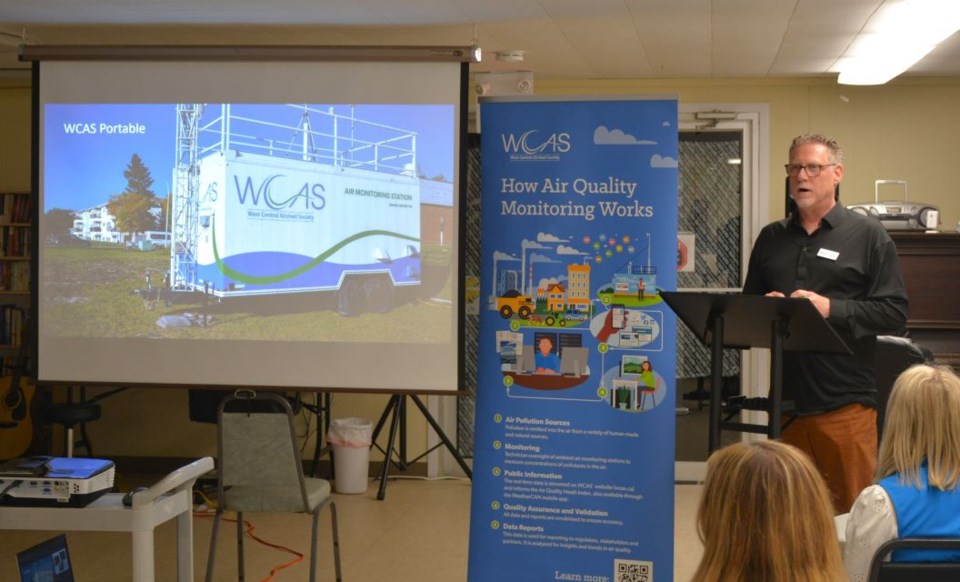Good air quality is a critical component of public health and the community's well-being. We all know that wildfire smoke is increasing.
That’s how Gary Redmond, executive director of the West Central Airshed Society (WCAS), started his presentation during an evening talk as part of the organization’s event called Wildfire Smoke and You: Air Quality and Your Health that was held at the Bridges Society in Hinton on May 29.
A series of speakers were lined up to cut through the fog on what makes good air quality and why it’s so important. It’s never been more important as it is in these past few years with rampant wildfires choking up the atmosphere throughout this province, across this country and around the world.
WCAS is one of 10 airsheds in Alberta that are responsible for monitoring and reporting outdoor air quality.
“Our data that we collect is used for many reasons,” Redmond said.
“It's used for planning and policy development at all orders of government. It's used for regulatory compliance of industrial emitters. But most importantly, I think, it's used for community air quality. The air quality health index, I think most people know about the number between 1 and 10 (to 10-plus). The data that forms that number comes from our monitoring with our network of monitoring stations.”
Wildfire smoke can have both physical and mental health consequences from lung health to emotional resilience learn more about the health impacts of wildfire smoke exposure and what you can do to protect yourself and your family.
WCAS Data Manager Dr. Kevin McCullum offered a breakdown of what comprises bad air quality with a series of graphs filled with years of data. Just in comparing 2022 versus 2023 figures, he noted the presence of ozone in the latter.
“It's a primary driver of the wildfire smoke,” McCullum said.
“Typically for ozone, what we'll get is the burning of the wood that will release VOCs (volatile organic compounds) as well as the nitrogen dioxides.”
According to the WCAS website, the AQHI is a scale that shows the health risks associated with outdoor air quality. It provides a number and related health risk category to help you understand the potential impacts of air pollution on your health.
In Canada, the AQHI is calculated using three air pollutants: ground-level ozone (O3), fine particulate matter (PM2.5) and nitrogen dioxide (NO2). These pollutants are known to have harmful effects on lung and heart health as well as other health impacts.
Of those, only PM2.5 is a solid. It refers to smoke particles that are 2.5 microns (or 0.0025 mm) or less in diameter. These are of special concern because they will infiltrate into the deepest alveoli of your lungs. The more smoke you breathe, the more clogged up with particles your lungs will become, making the problem worse and worse in the long run.
As expected during times of rampant wildfires, the recorded PM2.5 levels last year were markedly higher than the previous year.
“With particulate just based on the fires, that one just rocketed up going forward,” he said.
“There were about 650,000 hours of PM2.5 monitoring throughout the year from all of the stations in the province. One of the things that really stood out was a number of exceedances: nearly 20,000 exceedances of PM2.5 per hour. This is almost unheard of. This far exceeds anything we've ever had in the past. Typically, in the past, we were reading about 200 exceedances.”
Those are just a few of the reasons why air quality monitoring stations are so vital. The only problem is that they are also subject to the forces of nature as well.
McCullum said that there were a few stations that didn’t get full reporting because of wildfires.
“It was a concern that the fires would burn the poles.”






